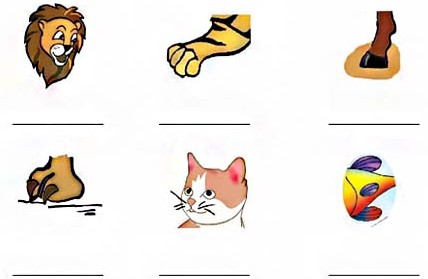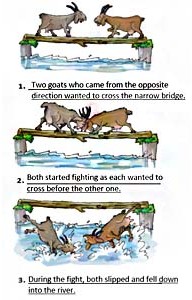NCERT Solutions for Class 3 English Chapter 20 Story: The Ship of the Desert
The NCERT English class 3 chapter 20 Ship of the Desert is a discussion between a camel and a lion. The camel tells the lion of how he is known as ‘The ship of the desert' as he can live without water and food for days and withstand the hot sand even on a hot afternoon. The lion talks about his padded paws and that he can run at the speed of 80 kilometers per hour, but in the end he acknowledges that the camel is the ship of the desert. The NCERT solutions for CBSE class 3 English chapter 20, Ship of the Desert help the child to: philosophyFocus on word building exercises philosophyFrame sentences for a picture composition philosophyLearn the difference in meaning by the usage of homophones in a sentence The NCERT textbook Marigold questions are answered in a simple and engaging manner. We also have related ‘Learning Concepts’, and interactive worksheets with solutions. Our ‘Learning Beyond’ segment caters to all the probable questions that the child might think out of curiosity. Download Chapter 20, The Ship of the Desert in the PDF format for free.
Download PDF For NCERT Solutions for English The Ship of the Desert
The NCERT Solutions for Class 3 English Chapter 20 Story: The Ship of the Desert are tailored to help the students master the concepts that are key to success in their classrooms. The solutions given in the PDF are developed by experts and correlate with the CBSE syllabus of 2023-2024. These solutions provide thorough explanations with a step-by-step approach to solving problems. Students can easily get a hold of the subject and learn the basics with a deeper understanding. Additionally, they can practice better, be confident, and perform well in their examinations with the support of this PDF.
Download PDF
Access Answers to NCERT Solutions for Class 3 English Chapter 20 Story: The Ship of the Desert
Students can access the NCERT Solutions for Class 3 English Chapter 20 Story: The Ship of the Desert. Curated by experts according to the CBSE syllabus for 2023–2024, these step-by-step solutions make English much easier to understand and learn for the students. These solutions can be used in practice by students to attain skills in solving problems, reinforce important learning objectives, and be well-prepared for tests.
Reading is fun
Why is the Camel called the Ship of the Desert?
The Camel is called the Ship of the Desert as it can walk across the desert even on a hot afternoon. The sand burns, but it is not bothered by the hot sand.
For how many weeks can a camel store food in its hump?
The camel can store food in its hump for two weeks.
What does the camel eat in the desert?
In the desert, a camel eats thorny bushes along with the thorns.
Choose the right answer.
i. Name the Ship of the Desert
(a) lion
(b) crab
(c) camel
(d) tiger
ii. Name the King of the Forest
(a) lion
(b) owl
(c) monkey
(d) crocodile
iii. The feet of the camel are
(a) thick and padded
(b) long and fat
(c) thick and fat
(d) thin and padded
iv. There are no rivers or lakes in
(a) plains
(b) mountains
(c) plateaus
(d) deserts
v. At a time a camel can drink
(a) 200 bottles of water
(b) 400 bottles of water
(c) 100 bottles of water
(d) 300 bottles of water
vi. A camel stores its food in its
(a) stomach
(b) hump
(c) legs
(d) lips
i. (c) camel
ii. (a) lion
iii. (a) thick and padded
iv. (d) deserts
v. (a) 200 bottles of water
vi. (b) hump
Word Building
Match the pictures with the words given below
| tusk beak mane whiskers hoof feet fin paw |


Make as many words as you can from within the given words. The first one is done for you.
| ROARING | IN | RAN | ROAR |
| FROWING | ___ | ___ | ___ |
| BLINKING | ___ | ___ | ___ |
| WONDERINGLY | ___ | ___ | ___ |
ROARING IN RAN ROAR
FROWING OWN WON RING
BLINKING BLINK INK LINK
WONDERINGLY WONDER RING WORE
Let’s write
Look at the goats in the pictures and write about them.


Talk time
Read these words aloud, paying attention to their spellings.
| i – eye week – weak in – inn no – know not – knot of – off bye – by our – hour need – knead see – sea here – hear eight – ate two – too |
Now make sentences with each word.
| I – eye: | I injured my left eye while playing. |
| week – weak: | Due to a viral infection, I became weak in the past week. |
| in – inn: | At night, we can rest in the inn. |
| no – know: | You should know when to say a “No”. |
| not – knot: | He did not want to tie that knot in the rope. |
| of – off : | The cricket match had to be called off because ofheavy rains. |
| bye – by: | She bid me goodbye while passing by my house. |
| our- hour: | In the next one hour, our flight will land in Kolkata. |
| need–knead: | I need your help to knead the dough for the bread. |
| see – sea: | When you are at sea, there is so much to see. |
| here – hear: | She is here to hear the legendary singer singing. |
| eight – ate: | Today, I ate my breakfast at eight O’clock in the morning. |
| two – too: | The two dancers made the performance too exciting for the viewers. |
(Note: You can write sentences of your own choice.)
Team time
Find out which animals live in
i. icy cold regions
ii. hot wet regions
iii. dry hot regions
i. Polar bears, penguins, and arctic foxes live in icy-cold regions.
ii. Monkeys, tigers, elephants, snakes, and birds live in hot wet regions
iii. Camels, ground squirrels, and antelopes live in dry hot regions
Frequently Asked Questions
The NCERT solution for class 3 Chapter 20: The Ship of the Desert is important as it provides a structured approach to learning, ensuring that students develop a strong understanding of foundational concepts early in their academic journey. By mastering these basics, students can build confidence and readiness for tackling more difficult concepts in their further education.
Yes, the NCERT solution for class 3 Chapter 20: The Ship of the Desert is quite useful for students in preparing for their exams. The solutions are simple, clear, and concise allowing students to understand them better. The Ship of the Desert Ally, they can solve the practice questions and exercises that allow them to get exam-ready in no time.
You can get all the NCERT solutions for class 3 English Chapter 20 from the official website of the Orchids International School. These solutions are tailored by subject matter experts and are very easy to understand.
Yes, students must practice all the questions provided in the NCERT solution for class 3 English Chapter 20: The Ship of the Desert as it will help them gain a comprehensive understanding of the concept, identify their weak areas, and strengthen their preparation.
Students can utilize the NCERT solution for class 3 English chapter 20 effectively by practicing the solutions regularly. Solve the exercises and practice questions given in the solution.

